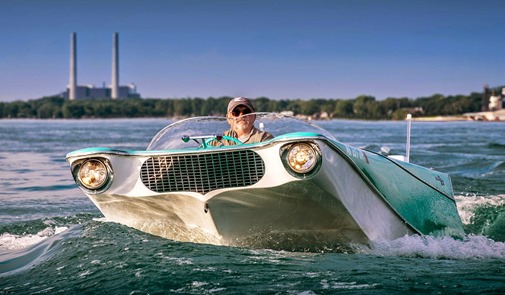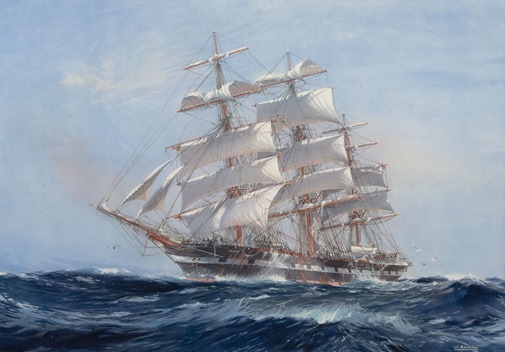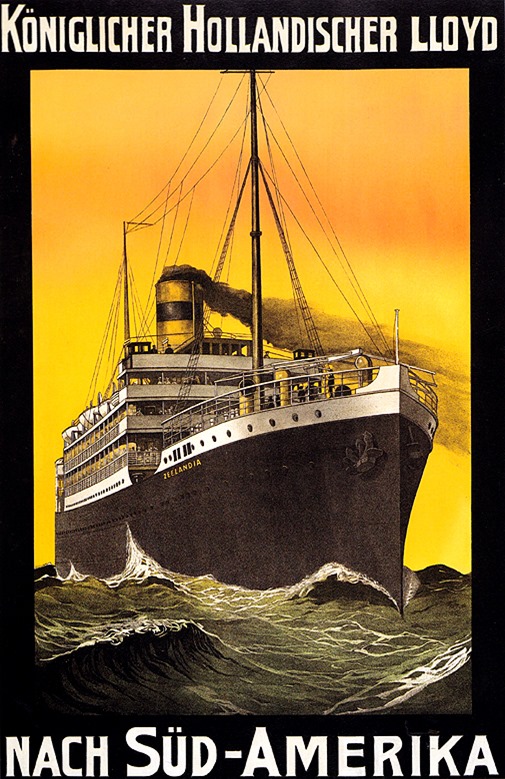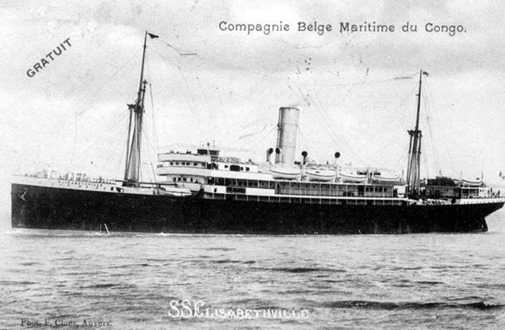
QSMV Dominion Monarch was a British refrigerated cargo liner. Her name was a reference to the Dominion of New Zealand. The unusual prefix "QSMV" stood for quadruple-screw motor vessel.
The ship was built in England in 1937–39, and when new she set a number of records for her size and power. She operated between Britain and New Zealand via Australia in civilian service 1938–40 and 1948–62 and was a troop ship 1940–47. She spent half of 1962 in the Port of Seattle as a floating hotel for the Century 21 Exposition and was then scrapped in Japan.

Building
Dominion Monarch was the world’s most powerful motor liner. She was powered by four William Doxford & Sons five-cylinder two-stroke single-acting diesel engines, each of 28 9⁄16 inches (72.5 cm) bore by 88 9⁄16 inches (2.25 m) stroke. Two engines were built by Swan Hunter and two under licence by Sunderland Forge. The engines were the largest that Doxford’s had constructed. Together they gave her a rating of 5,056 NHP or 32,000 bhp, a top speed of 21.5 knots (39.8 km/h) and cruising speed of 19.2 knots (35.6 km/h) at an engine speed of 123 rpm.
The ship had four 100 lbf/in2 double-ended auxiliary boilers. Onboard electricity was supplied by five six-cylinder 900 bhp Allan diesel engines, each powering a 600 kW 220 volt generator. Much of her cargo space was refrigerated. Her navigation equipment included wireless direction finding, and echo sounding device and a gyrocompass.
Dominion Monarch was completed on 12 January 1939. On 28 January, she had her sea trials off St Abb’s Head, Berwickshire, Scotland. before sailing to London, where she was docked at the King George V Dock in the evening of 29 January. She was then handed over to her owners, who registered her in Southampton.
Pre-war service

The new ship sailed from North East England to London to load cargo for her maiden voyage. Facilities there had been upgraded in preparation for her, with eight new three-ton capacity electric cranes having been installed on the north quay of the King George V Dock. She left London on 17 February 1939, and made her first call at Southampton where she embarked passengers for Australia and New Zealand. She then called at Tenerife in the Canary Islands for bunkers, Cape Town and Durban in South Africa; and Fremantle, Melbourne, and Sydney in Australia. On 24 April 1939 she reached Wellington in New Zealand, where she had a slight collision with the crane vessel Hikitia. Dominion Monarch also visited Napier, New Zealand. Her voyage set more records, including fastest passage from Britain to Australia via the Cape of Good Hope, largest ship to serve Australia, and largest ship to serve New Zealand. On the Durban to Fremantle leg, she averaged 19.97 knots (36.98 km/h).
 After her maiden voyage, Dominion Monarch switched from Tenerife to Las Palmas for her regular refueling stop in the Canary Islands. Her regular journey time between Southampton and Wellington was 35 days. Shaw, Savill and Albion promoted the service as "The Clipper Route", and fares began at £58. With the break bulk cargo handling techniques of her era the ship was able to make three round trips a year, spending almost as much time unloading and loading in Britain and New Zealand as voyaging at sea.
After her maiden voyage, Dominion Monarch switched from Tenerife to Las Palmas for her regular refueling stop in the Canary Islands. Her regular journey time between Southampton and Wellington was 35 days. Shaw, Savill and Albion promoted the service as "The Clipper Route", and fares began at £58. With the break bulk cargo handling techniques of her era the ship was able to make three round trips a year, spending almost as much time unloading and loading in Britain and New Zealand as voyaging at sea.
Post-war civilian service
Dominion Monarch returned to the Tyne where Swan Hunter refitted her as a civilian liner again. This took 15 months, during which she was converted to carry 508 passengers, all First Class. The refit cost £1,500,000 – as much as she had cost to build. She resumed civilian service on 16 December 1948, leaving Britain with passengers and 10,000 tons of cargo for Australia and New Zealand. The crew was a motley collection, there were fights among them and the ship was nicknamed the "Dominion Maniac" or "The Bucket of Blood".

Of the 508 passenger berths, 100 were set aside for passengers between Britain and Cape Town. These were priced at £150 8s 0d, only slightly more than the fare on the competing Union-Castle Line service.
The New Zealand Cricket Team sailed from Wellington on Dominion Monarch on 26 February 1949 for their summer tour of England. They arrived at Southampton on 2 April. Following a tour of South Africa, the All Blacks rugby union team departed from Durban on 23 September 1949 for their return home. In 1950 the ship was fitted with a new set of propellers, which gave her quieter  running. She spent 5–23 May 1953 at Wallsend slipway for an extensive overhaul. The South African cricket team arrived at Perth, Australia in Dominion Monarch on 14 October 1953 for a tour series.
running. She spent 5–23 May 1953 at Wallsend slipway for an extensive overhaul. The South African cricket team arrived at Perth, Australia in Dominion Monarch on 14 October 1953 for a tour series.
In 1955 the 20,204 GRT Southern Cross was completed and joined the Shaw Savill fleet, displacing Dominion Monarch as flagship. The two ships inaugurated a round the World service in alternate directions, extending the London – Cape Town – Australia – Wellington route via Fiji, French Polynesia, Panama and Curaçao back to London.
On one occasion in the latter part of 1961 Dominion Monarch collided with the end of the pier in Sydney Harbour. The damage caused minor flooding in the crew quarters during a storm while crossing the Great Australian Bight.
On 27 June 1961 Vickers-Armstrongs on the Tyne launched Dominion Monarch ‘s replacement, the 24,731 GRT Northern Star. Dominion Monarch left London for the last time on 30 December 1961. In February 1962 she was sold to Mitsui for £400,000 and on 15 March she left Wellington for the last time. She arrived at Southampton on or about 22 April. After disembarking her passengers, she sailed to London to unload her cargo. On 10 July Northern Star entered service in her stead.
Century 21 Exposition and scrapping
From June to November 1961 Mitsui leased Dominion Monarch as a floating hotel and entertainment centre for Seattle’s Century 21 Exposition, along with the Mexican-owned Acapulco and Canadian-owned Catala. She arrived at Seattle on 29 May 1962. Accommodation demand was less than predicted, Dominion Monarch ‘s US charterer lost $200,000 and her charter was reduced by several weeks. The exhibition closed on 21 October and the ship arrived in Osaka, Japan on 25 November to be scrapped.
Text from Wikipedia
Read Full Post »

















































 Nevasa
Nevasa












